For the second leg of our backpacking trip, we travelled to the capital of Cambodia, the City of Phnom Penh. After an 8 hour bus ride from Ho Chi Minh, we arrived in the city around 9 in the evening. The bus ride cost around VND 344,500 or USD 16 per person that includes snacks & water.
Since we were arriving late, we informed our hotel beforehand about our arrival time and they were very accommodating. We stayed in the Artist Guesthouse which was around USD 28 per night, good for 2 people. As always, location is the number 1 thing we consider when booking hotels. This hotel was only around 5-10 minutes walk to the National Museum, Royal Palace, and the riverside which is very convenient. Considering the time we arrived, we just had our dinner and went straight to bed for an early start the next day.
Cambodia's currency is called Riel but US Dollar is widely accepted in the country therefore we did not bother to have our money exchanged. Stuffed with breakfast, we headed out to start our 1 day historical and cultural tour.
National Museum
Seeing that we have a few attractions close by, we decided to visit all of the ones near our hotel in the morning first and then booked for a half day city tour for the rest of the places.
Our first destination was the National Museum. It is Cambodia's largest museum of cultural history. This attraction was only 2-3 minutes walk from our hotel. We paid for an entrance fee of USD 5 per person.
The museum houses one of the world's largest collections of Khmer art, including sculptural, Khmer ceramics, bronzes, and ethnographic objects. Its collection includes over 14,000 items, from prehistoric times to periods before, during and after the Khmer Empire, which at its height stretched from Thailand, across present-day Cambodia, to southern Vietnam. - Source
There are also available English, French and Japanese-speaking guides. This will cost you an extra of USD 6. Since we were on a budget and we did not anticipate this extra expense, we did not hire one. Instead, we just went around on our own which we actually prefer. Even without a guide, it did not make our visit less interesting.
From the entrance, a hall of small artefacts extends from left to right, with glass display cases full of bronze statues, elephant bells, and etc. To the left there is a hall of sacred statues. Before entering that part of the museum, a staff handed us some jasmine flowers in a stick (or we call it sampaguita in the Philippines) to offer to one of sacred statues. There is also a courtyard garden found at the center of the museum that shows the influence of Khmer art in a modern Cambodia.
Unfortunately, visitors are not allowed to photograph the collection. Hence, we just took our time outside the museum for some photographs.
Royal Palace
The next stop on our walking tour was the Royal Palace. It is a complex of buildings which serves as the royal residence of the king of Cambodia. According to articles I've read, the Kings of Cambodia have occupied the palace since it was built in 1860s, except when the country came into turmoil during and after the reign of the Khmer Rouge.
The palace was constructed after King Norodom relocated the royal capital from Oudong to Phnom Penh in the mid-19th century. It was built atop an old citadel called Banteay Kev. It faces towards the East and is situated at the Western bank of the cross division of the Tonle Sap River and the Mekong River called Chaktomuk (an allusion to Brahma). - Source
We arrived at around 9AM and paid for the entrance fee. At the time of our visit we only paid for USD 6.50 but I heard it now increased to USD 10. At the entrance, a map will be provided to each visitor. A tour guide is also available here but again, opted not to hire one. We chose to explore the vast area on our own instead.
The First building on the map was the Throne Hall. It is a large building with three spires of which the central one has the four-faced head inspired by the four faces of Bayon temple in Angkor (a closer look of the center spire). It is still in use for certain purposes as coronations, royal weddings, diplomatic happenings and other events. The inside is closed for tourists but there are "windows" that are open where you can take a peak. The inside looks very luxurious and grandiose of course.
The second building we visited was the Moonlight Pavilion. It is an open-air pavilion that serves as a stage for Khmer classical dance. It is one of the most distinguished buildings of the palace as it is easily seen from the outside.
The Pavilion serves as a venue for the Royal Dancers, as a tribune for the King to address the crowds and as a place to hold state and Royal banquets. Most recently, the Pavilion was used for a banquet and a tribune for the new King at the 2004 coronation of King Norodom Sihamoni.
Another notable structure in the complex is the Silver Pagoda. It is separated by a walled walkway but still within the compound. Its main building houses many national treasures including a jewelled Buddha statues. The most significant one is a small crystal Buddha or the Emerald Buddha of Cambodia. Photos were again prohibited inside the temple. So unfortunately, we were able to take a photo of the Buddha.
Also surrounding the temple, you will notice a lot of different stupas.
Also just outside the temple, a replica of the famous Angkor can be found. We figured to have a look at it since our next trip will be to Angkor Wat.
S-21 or Toul Sleng Genocide Museum
After our visit at the Royal Palace, we decided to have our lunch break since it was already noon when we finished our tour. We also went ahead and booked a half day city tour at Mekong Imperial Travels (where we also booked our Bus Tickets going to Siem Reap) located in the riverside. The tour cost around USD 15 for one tutuk. We already had our minds set to go to Toul Sleng Museum and The Killing Fields so the driver brought us first to Toul Sleng Genocide Museum. The ticket will cost you around USD 3.
The site was a former high school named Tuol Svay Pray High School. During the rise of the Khmer Rouge regime, they renamed the high school to S-21 (Security Prison 21) and turned it into a torture, interrogation and execution center. Former prison staff say as many as 30,000 prisoners were imprisoned before the Khmer Rouge leadership was forced to flee.
Today, S-21 Prison is now known as the Tuol Sleng Genocide Museum. Inside, it looks like any high school with five buildings facing a grass courtyard. On the ground floor in one building, there are school desk and chair set up that face a steel bed frame with shackles on each corner. Photographic evidence are also displayed on the far wall. It has a picture of bloated, decomposing bodies chained to bed frames. Other rooms showcased the equipments they used to torture the prisoners and graphic photographs are again displayed on the wall. There was even a glassed case containing all the clothes of the prisoners. On the 3rd floor, there were detailed accounts and stories of those that survived this terrible time.
It is said that around 6,000 S-21 portraits have been recovered and are currently displayed in the museum. I have seen some graphic photos from our visit at the War Remnants Museum but the portraits here are the most haunting images I've ever seen. We did not dare take pictures of these portraits even if it was allowed. We left the museum feeling so sad and down. And we did not even know that the next stop will be even more heartbreaking.
Killing Fields
To continue our tour, the fitting next destination is of course the Killing Fields.
Choeung Ek was the preferred execution site for those that were imprisoned in Tuol Sleng or S-21. Corpses of the prisoners were first buried in Toul Sleng however as the numbers grew and became unmanageable, they transport these prisoners bound and blindfolded to Choeung Ek just 15 kilometres outside Phnom Penh. Choeung Ek is just one of the thousands of similar sites across Cambodia.
Once you enter and pay for a USD 6 ticket, you will be provided a player which gives an audio-guided tour in different languages. Make sure not to forget to use the audio-guide as it will bring this site to life in all its horror. Through eyewitness testimony, scientific analysis, painful research and bare-bones digging, all of it will be narrated.
Armed with a map and audio player, we learned that they were brought here under cover of darkness, many under the belief that they were being transferred to another location. They were lined up and had their heads smashed to avoid wasting bullets.
As we explored the place, we reached this part where I was not able to hold my tears anymore. The sign says "Killing tree against which executioners beat children". Babies/newborns were killed by smashing their head on this tree. The reason they killed the young ones is to stop them from growing and making revenge against what was done to their parents. As I was standing there, I can feel my heart being stabbed just imagining what terrible things happen at that place.
The audio tour will take you around the different parts of the site, from where the victims first arrived, the burial pits, to the Buddhist stupa where they are housing more than 8,000 skulls they dug up. Going inside the stupa and realising that these might be the same people from the photographs I've seen in Tuol Sleng Genocide made my stomach turn.
Both Toul Sleng and the Killing Fields are definitely not for the faint hearted and not advisable for the very sensitive. Our knees became weak after we finished the tour, not because we were tired, it was because of the horror and story we just heard. It was an experience you can never forget.
Independence Monument
After going through the past to sites, we need an lift me up. So on our way to our last attraction, we asked our tuktuk driver to make a quick stop at the Independence Monument which he gladly complied.
When we first arrived in Phnom Penh, on our way to our hotel we already saw this Angkorian style tower located in the heart of the capital. It was illuminated by red, blue and white lights, probably to represents the Cambodian flag. Since we were very tired at that time, we were not able to stop by. We later then searched what that tower was and found out it was the Independence Monument.
It was built in 1958 to Sybilles Cambodian Independence Day after winning back their independence from the French protectorate on the 9th of November 1953. The monument attracts many tourists for its peculiar looking but unique style distinguishes it from all the buildings in the city. It is also used as a memorial place dedicated to the Cambodian's patriot who died for the country. - Source
The sun was about to set by the time we arrived there but I was able capture this photo, just a silhouette of the tower.
There is also a big open park at the Independence Monument that seems to be a popular place among the locals.
Wat Phnom
The last stop of our tour was Wat Phnom. The entrance fee to this site is just USD 1. Set atop a small hill and serving as a central site in the city as religious sanctuary for prayers and offerings.
There was also this giant flower clock that provided the exact time of the day that looked really amazing. It is one of the temple's striking visual elements because of its nearly 20 meter width. Sources pointed out that the original clock was a gift from France installed in the 1960s. But in 2000 it was reinstalled with a newer version that was gifted from China.
Riverside
Early next day, we hiked by the river. The place greatly reminded us of a place in the Philippines, Dumaguete City's boulevard. It has a lot of benches positioned to face the river and flags of different countries were lined up. We just spent a few minutes as we were scheduled to leave for Siem Reap that day.
Just like our our time in Ho Chi Minh, Phnom Penh was another valuable trip. We learned and experienced a lot from the city even if we only stayed there for just a day. I hope this travel diary will encourage you to visit this place too.
Wincee
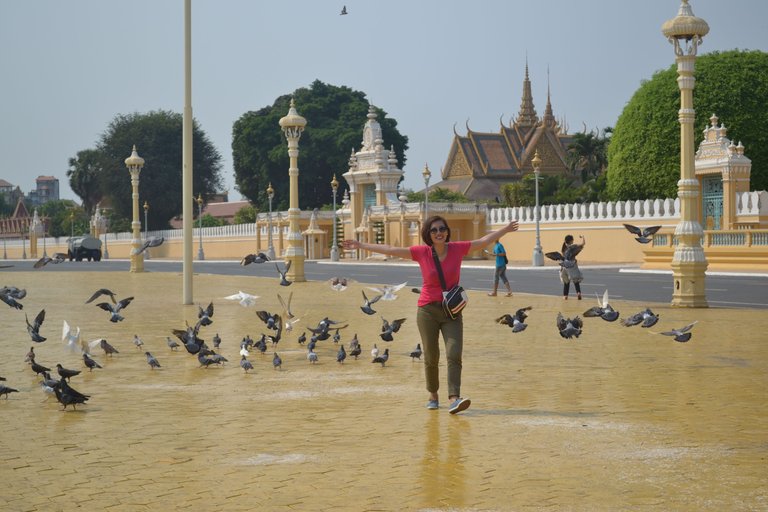
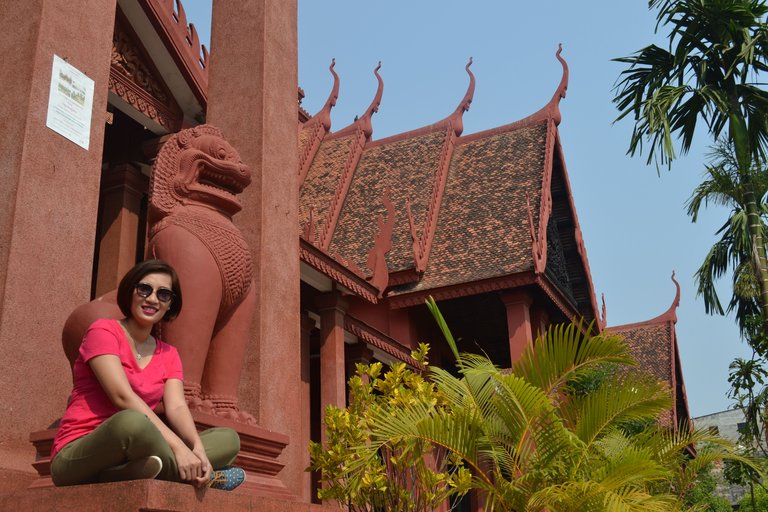
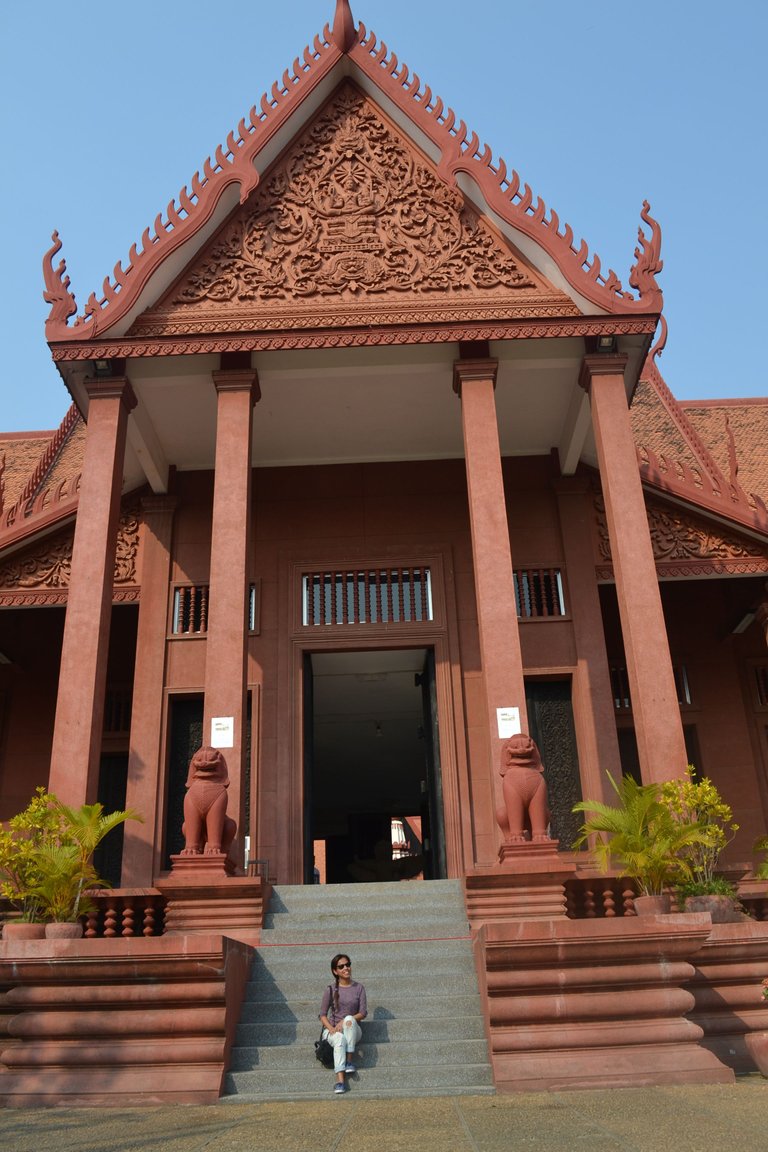
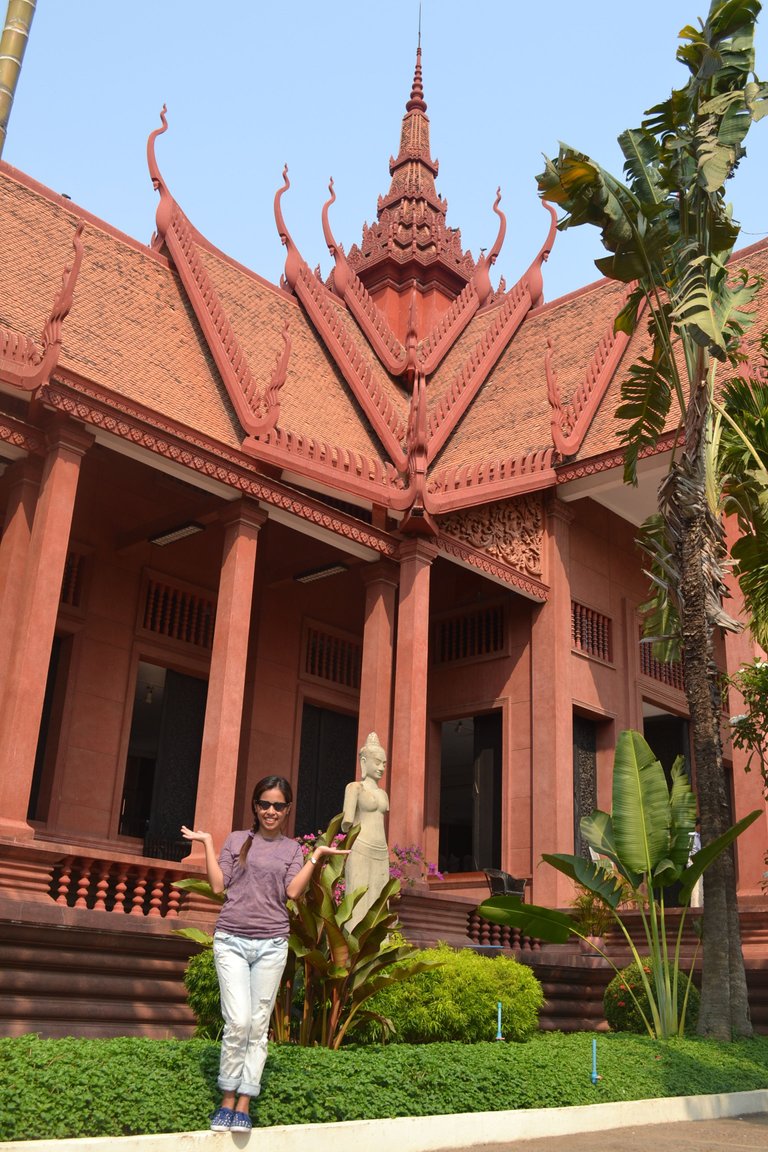
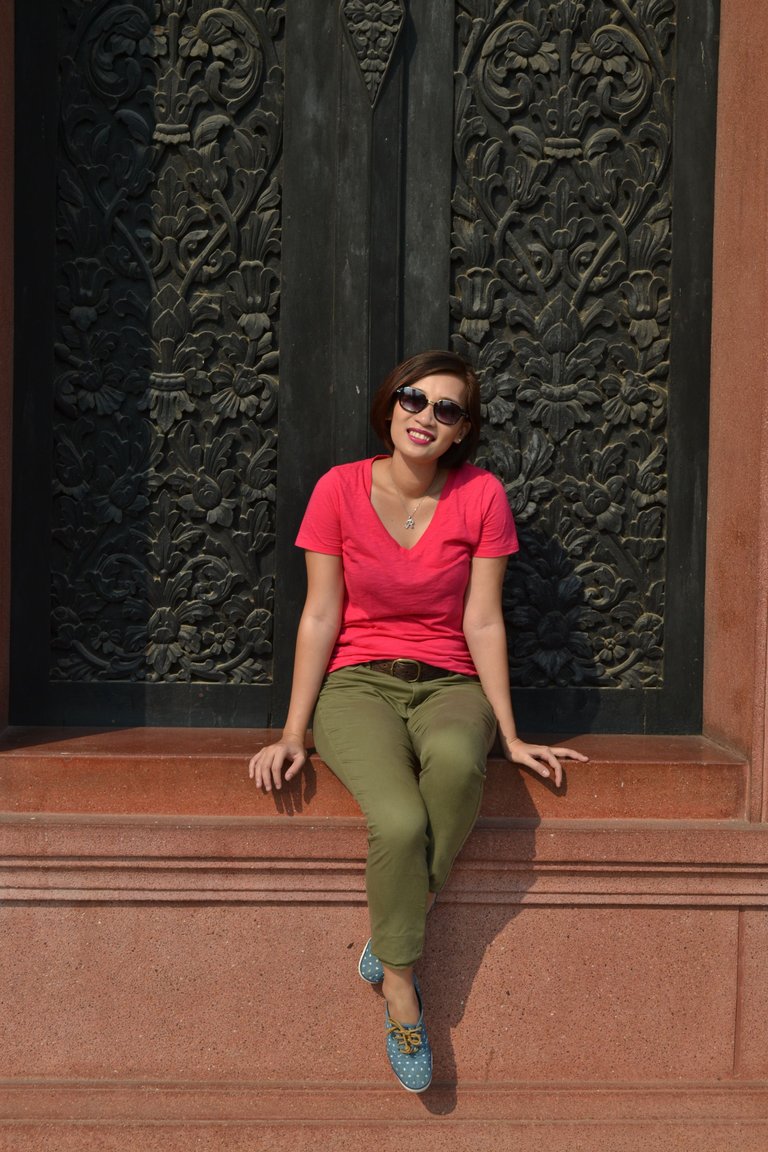
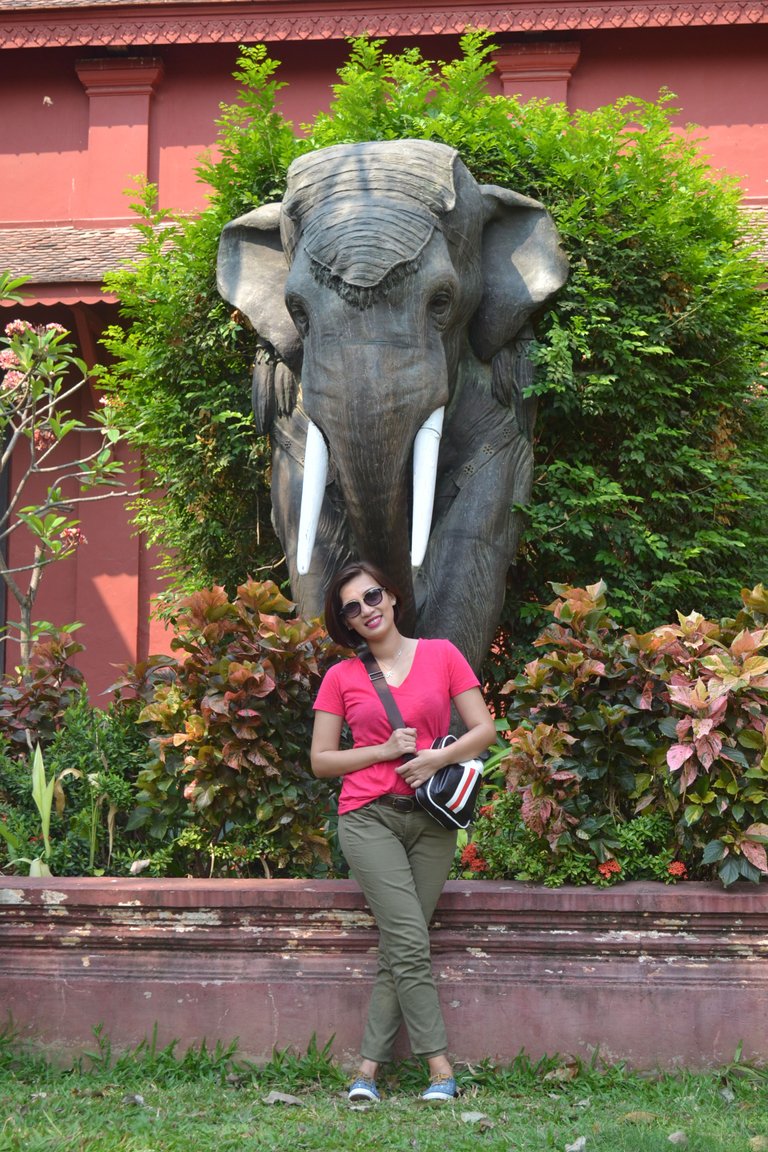
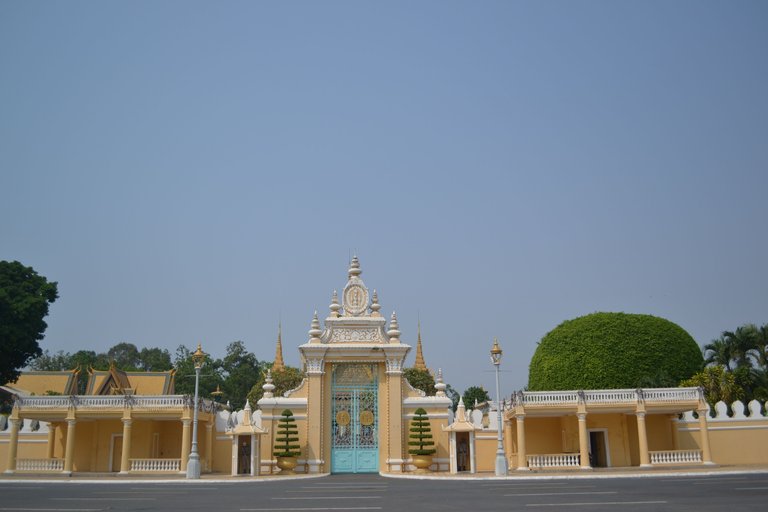
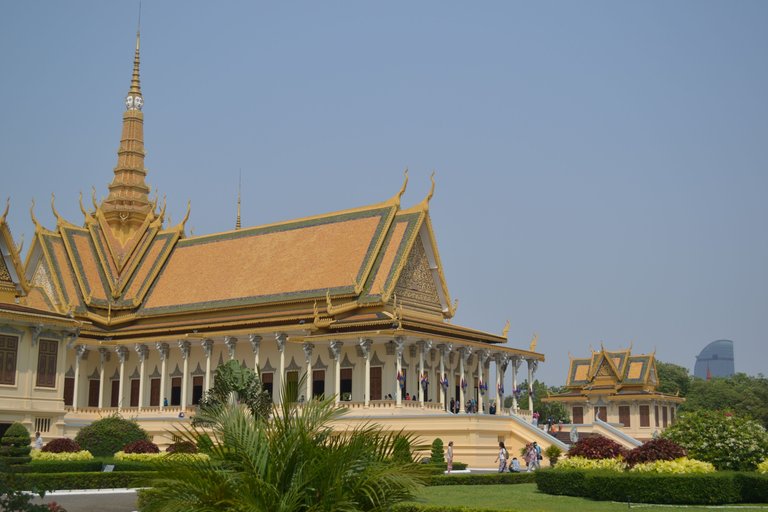
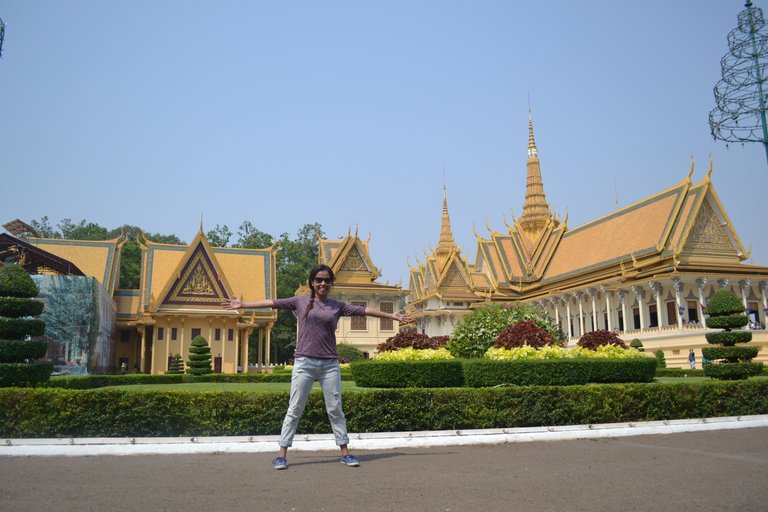
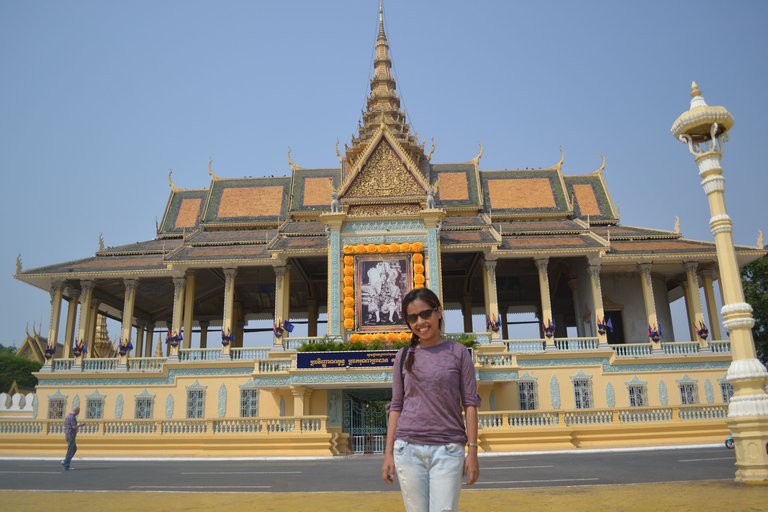
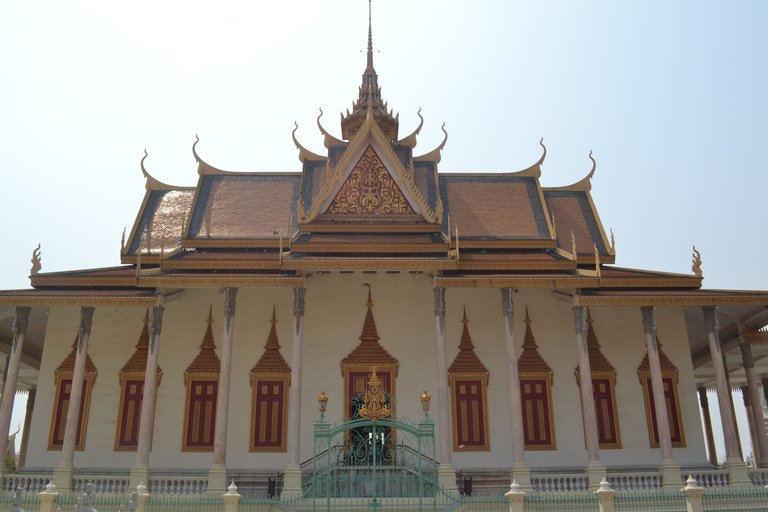
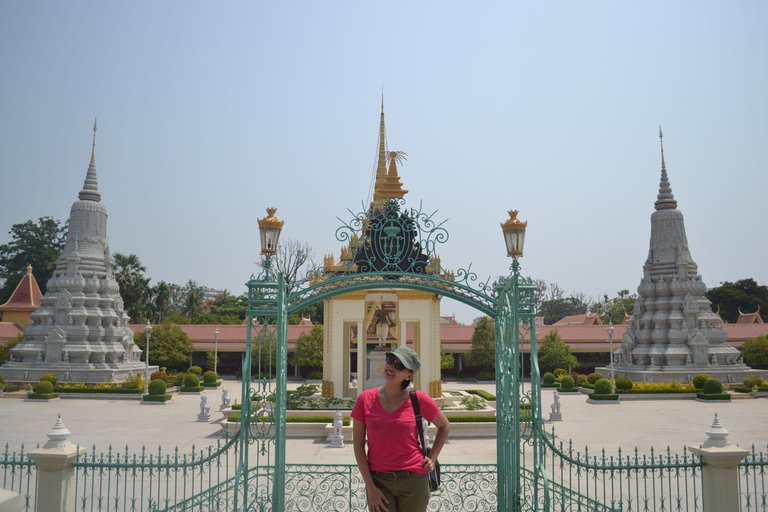
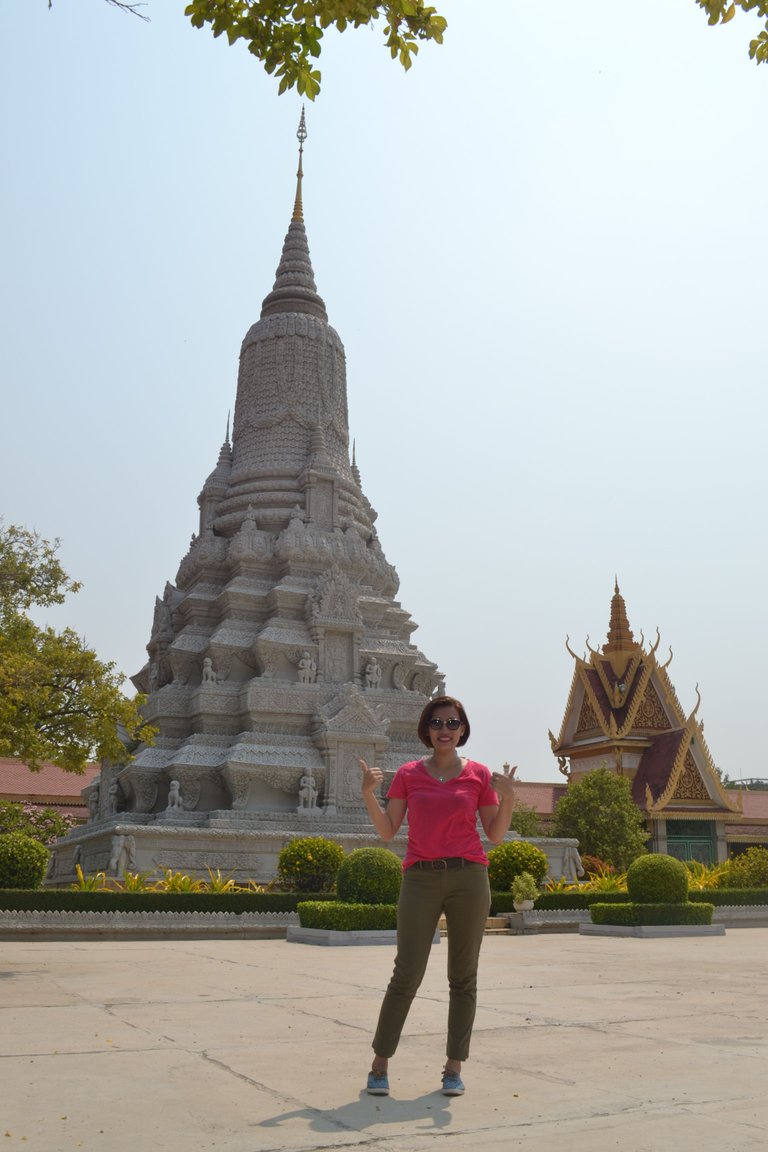
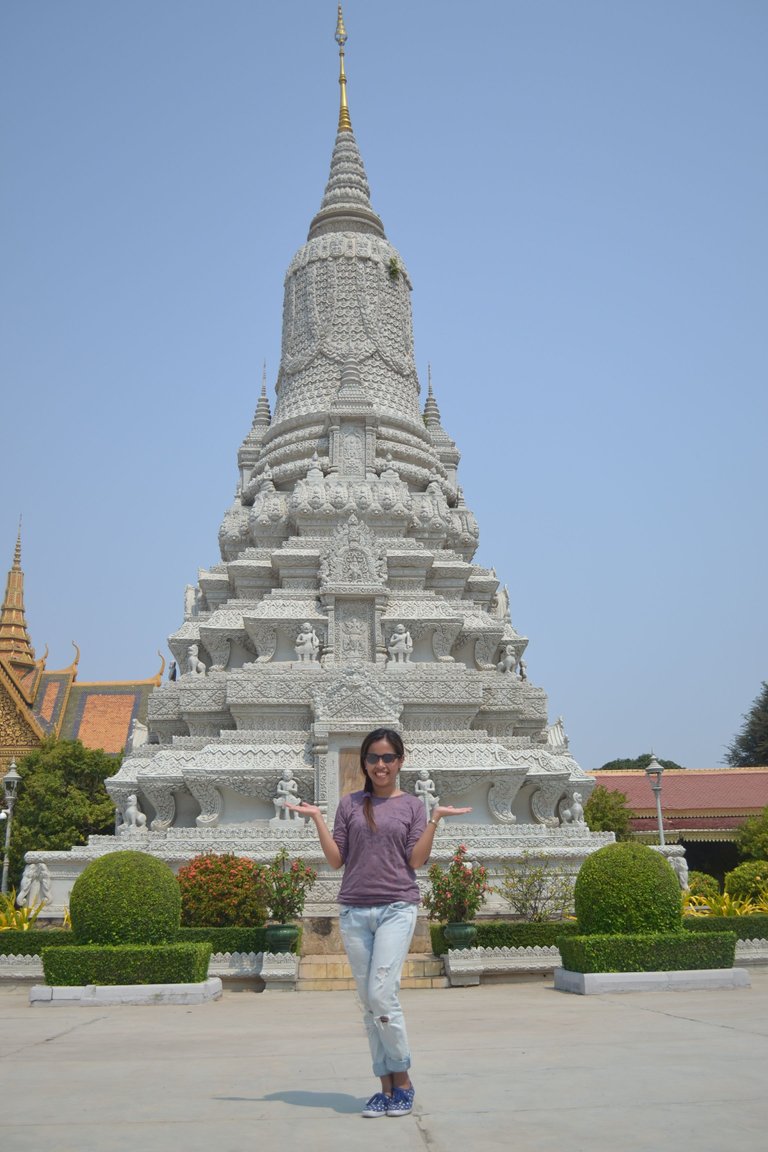
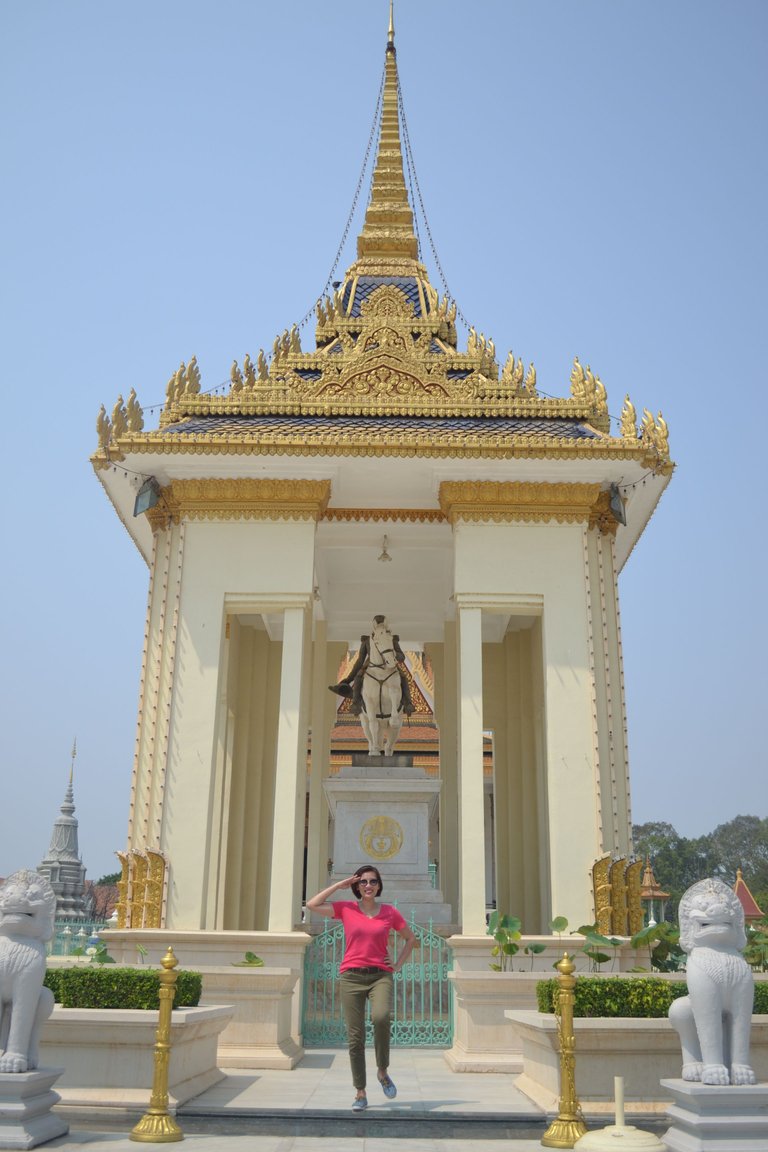
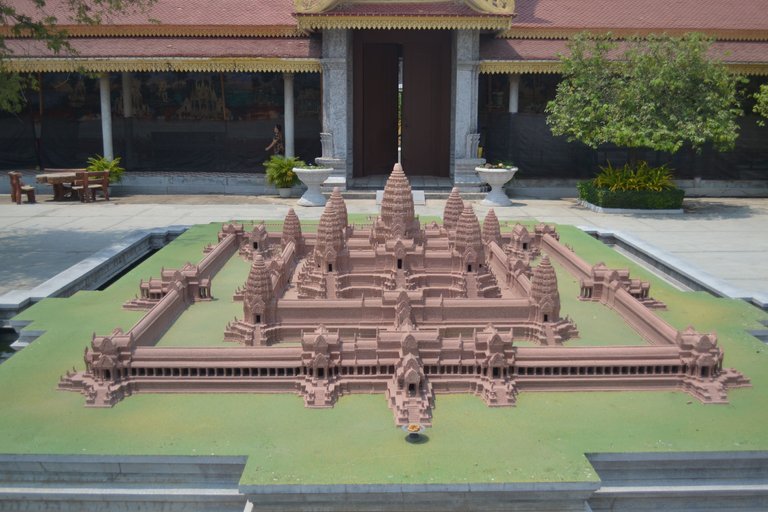

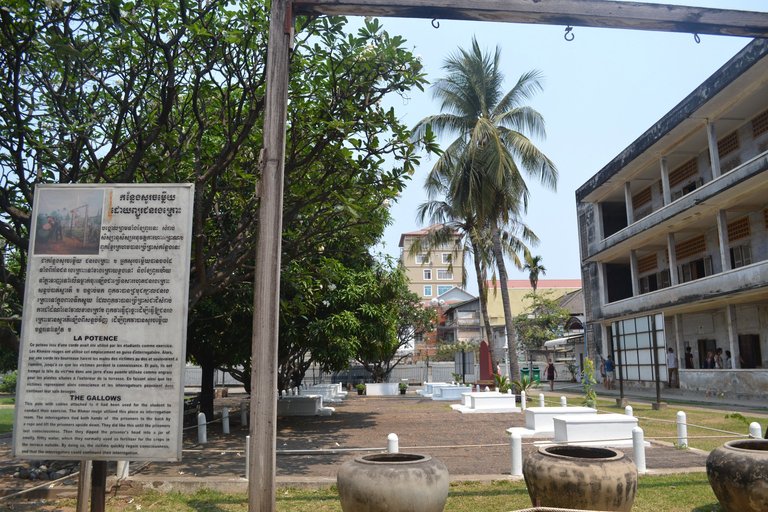
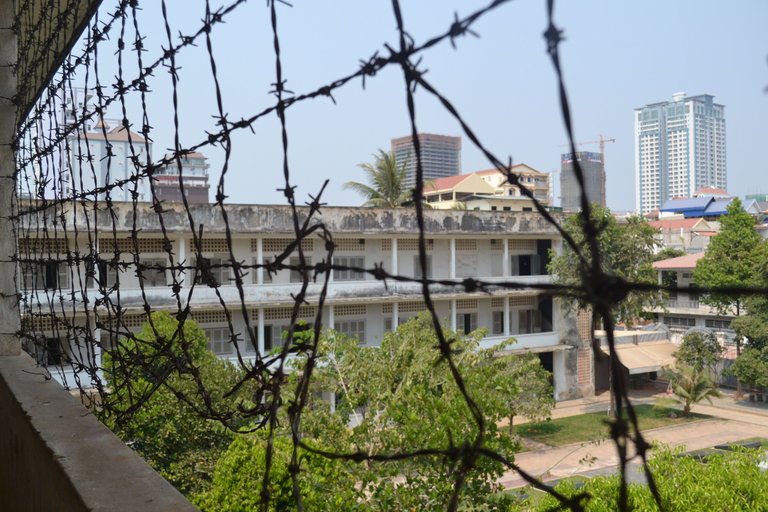

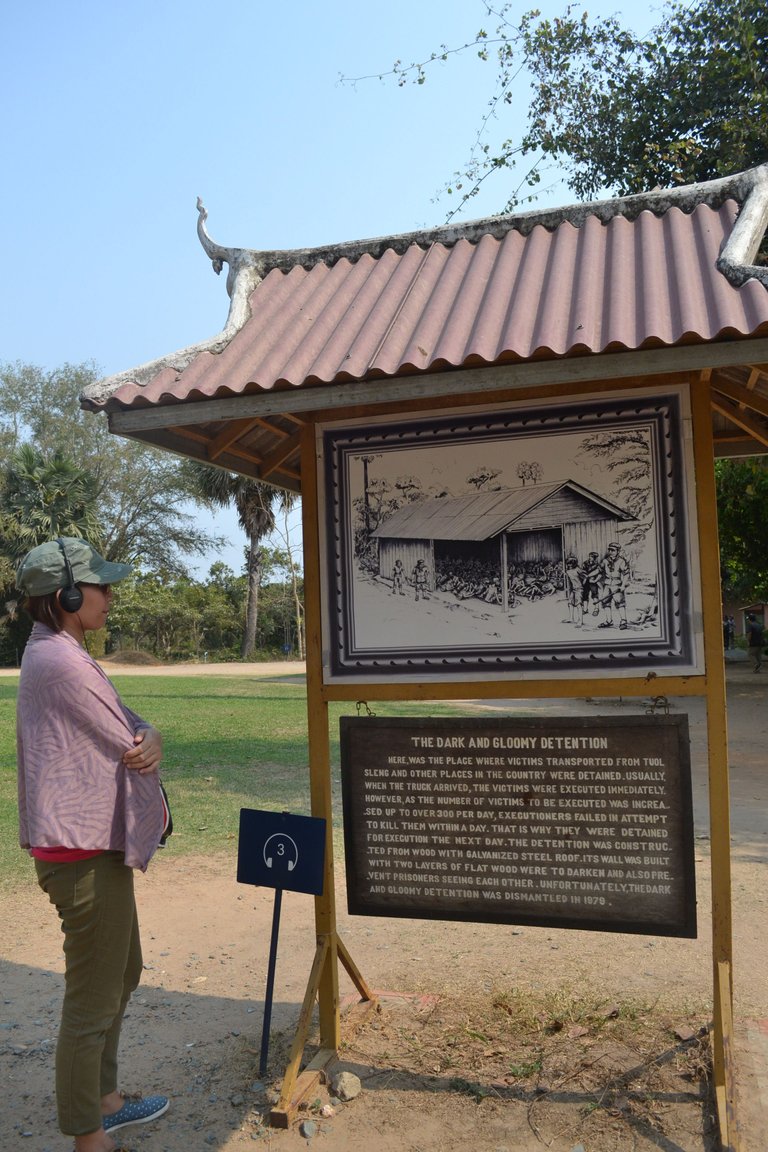
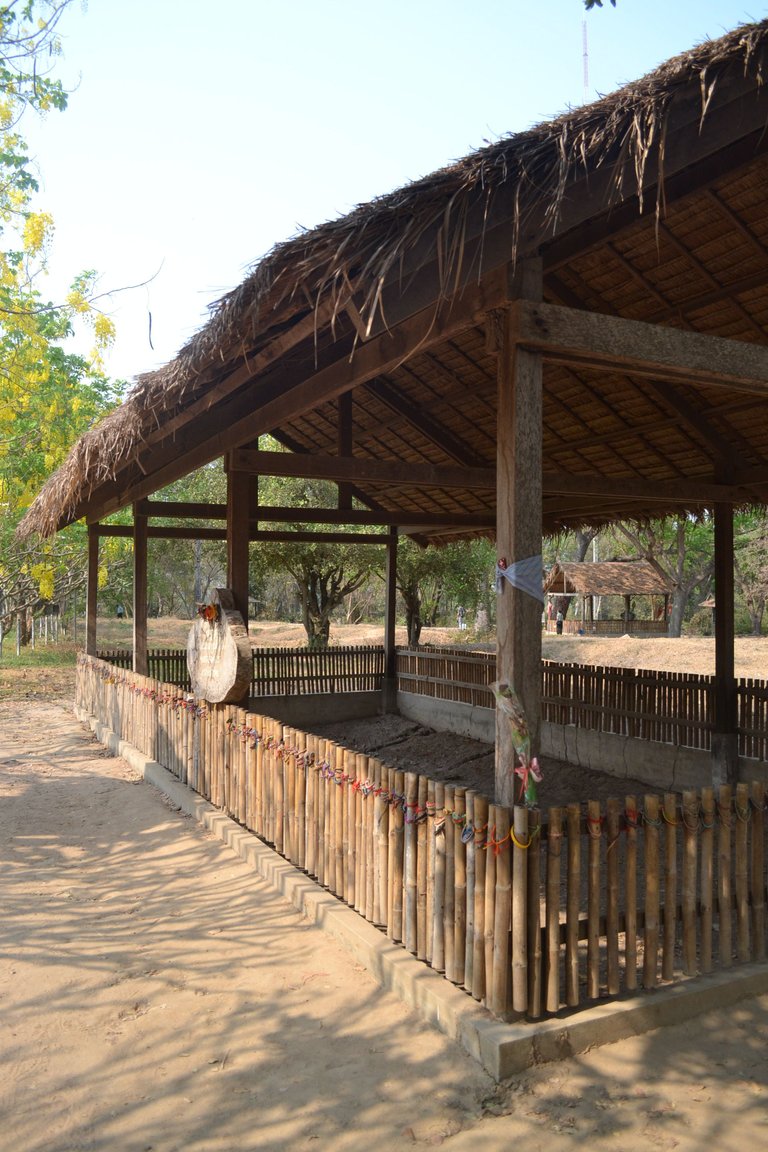
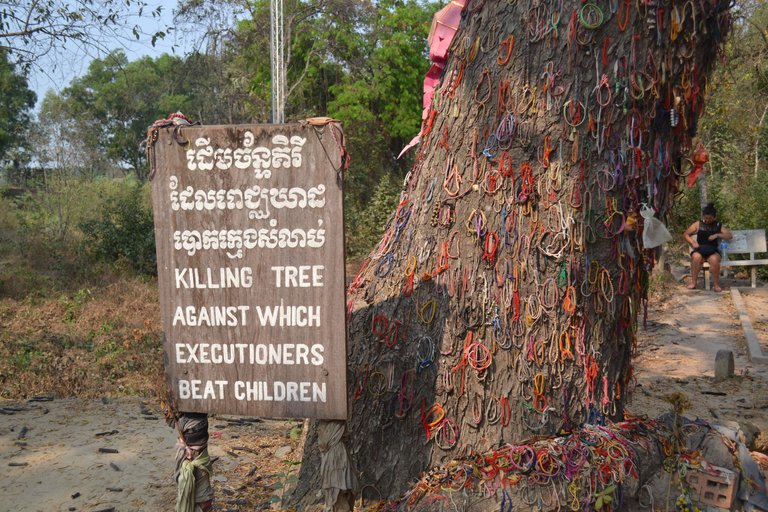
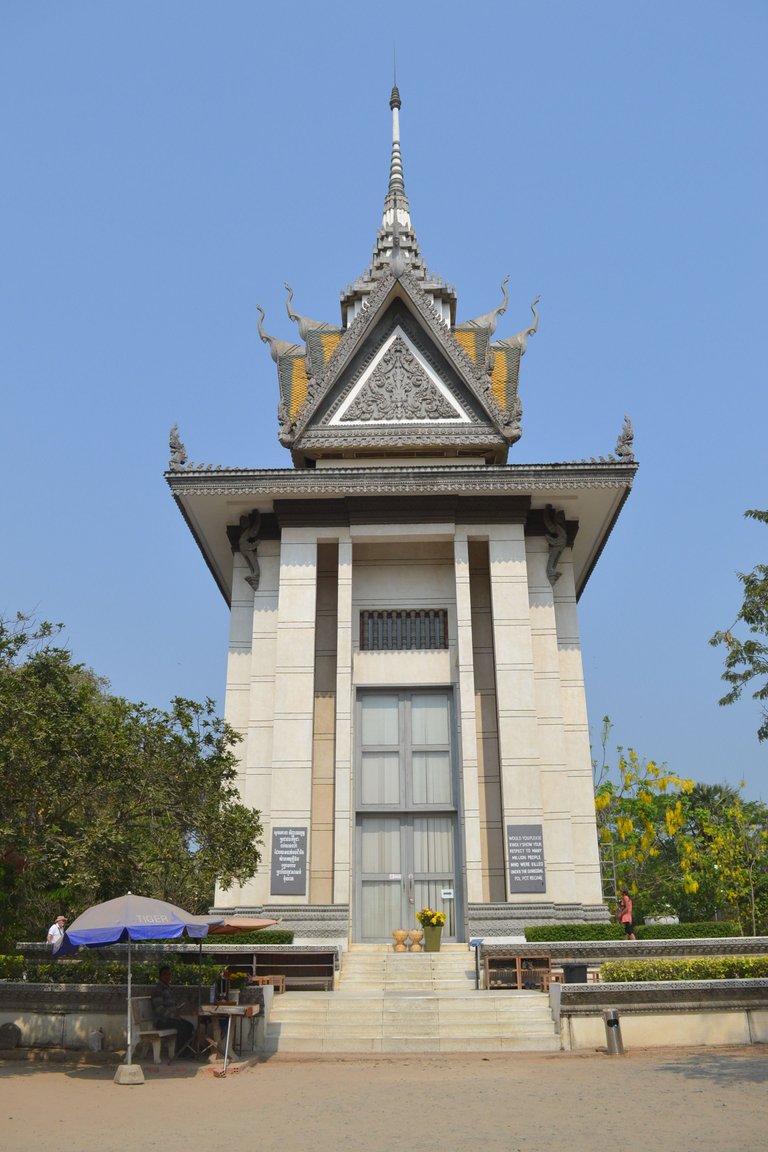
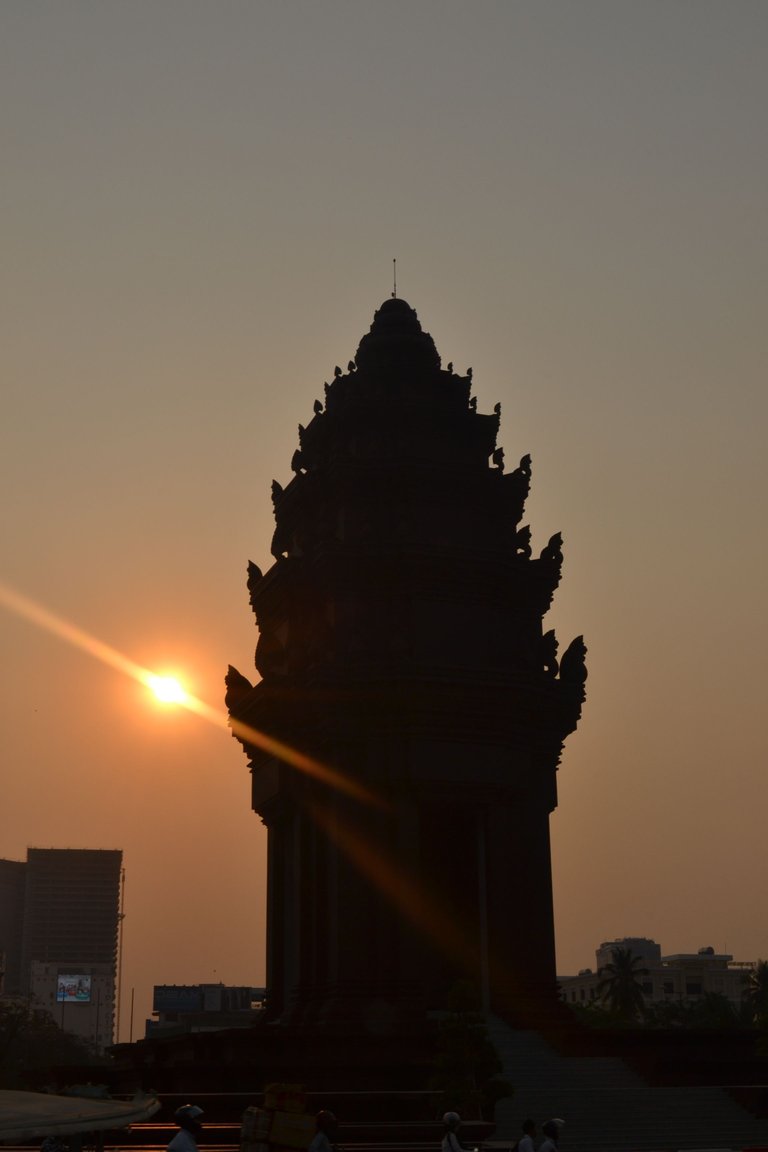
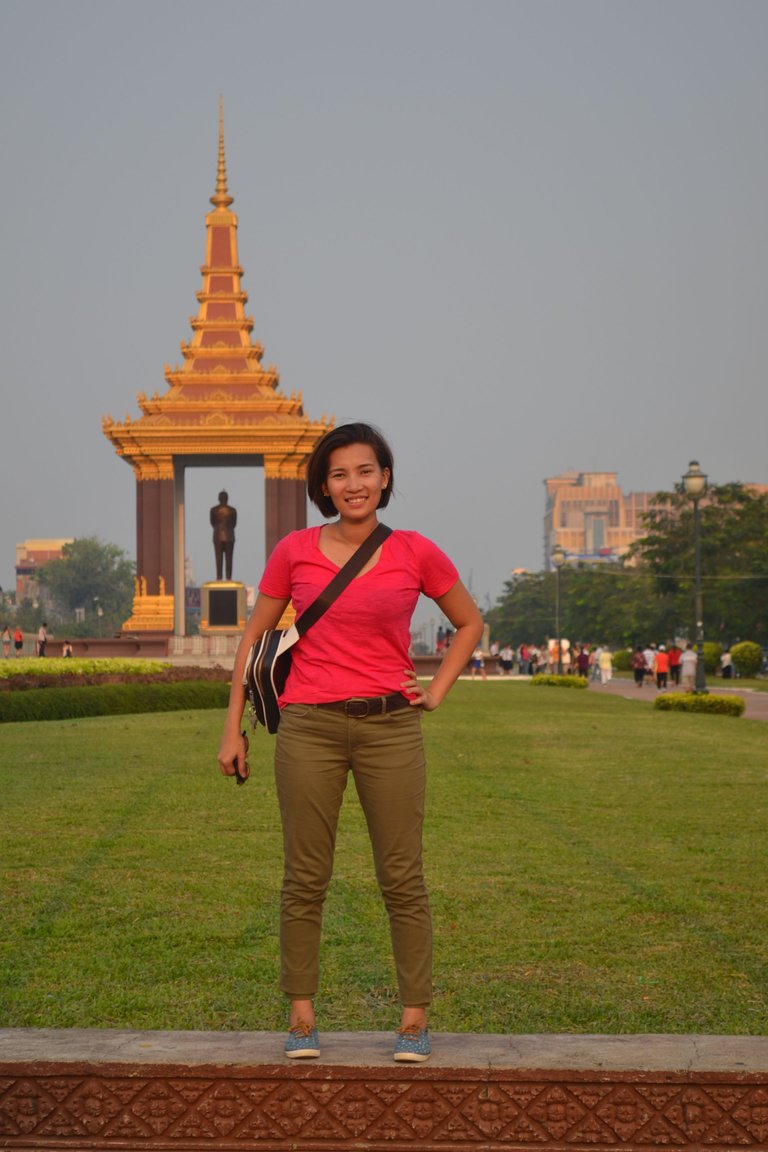
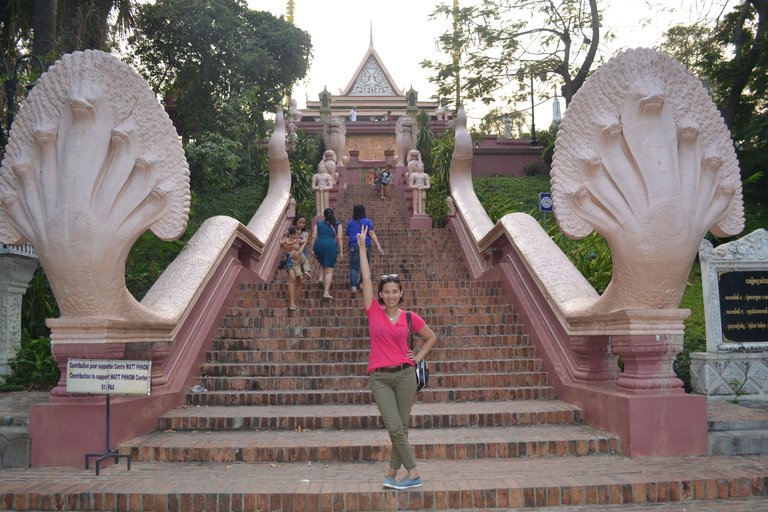
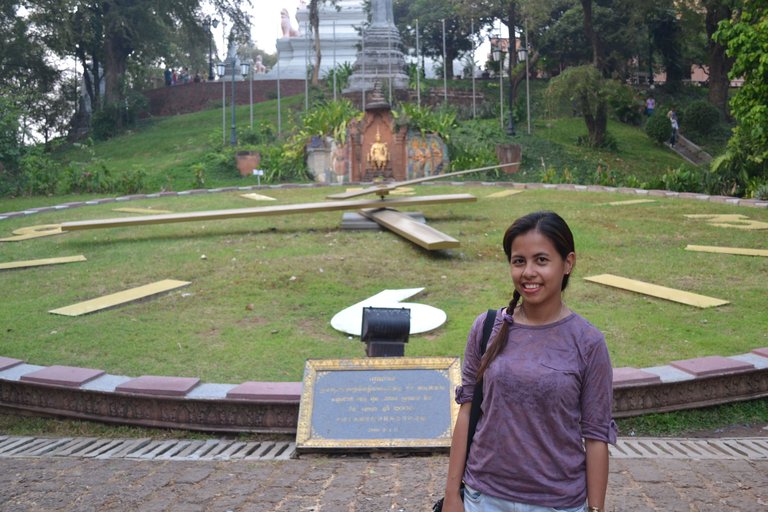
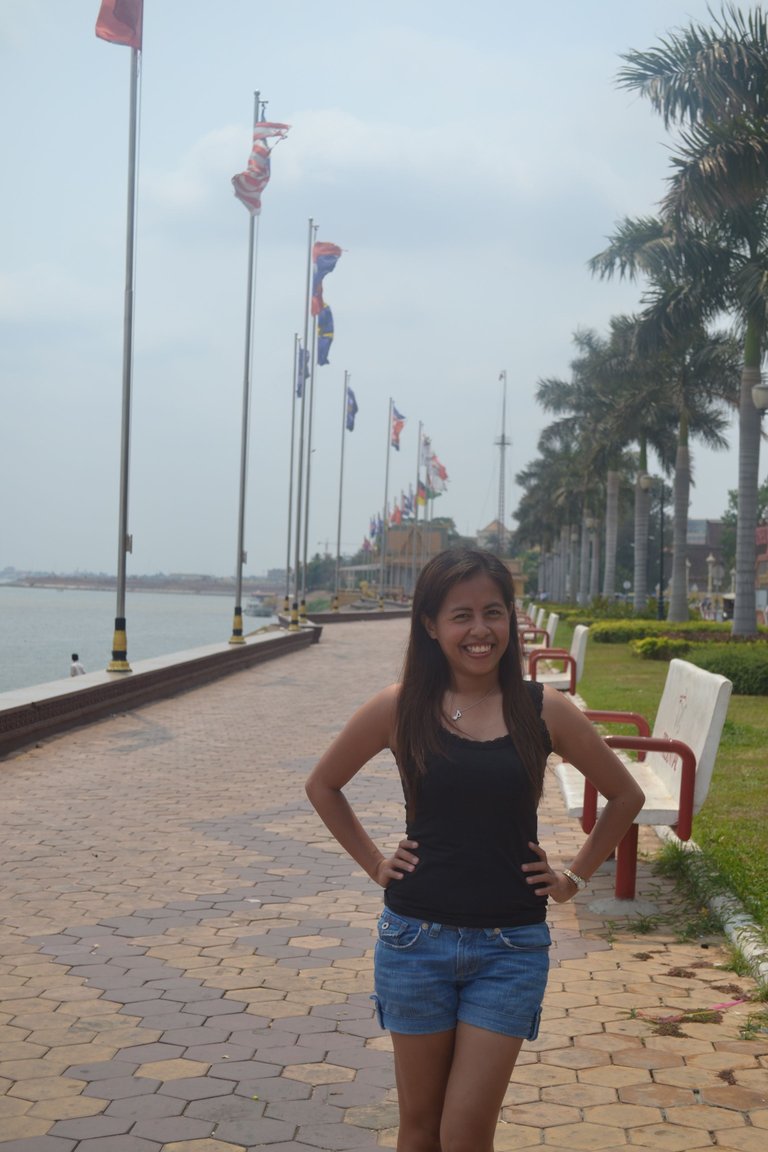
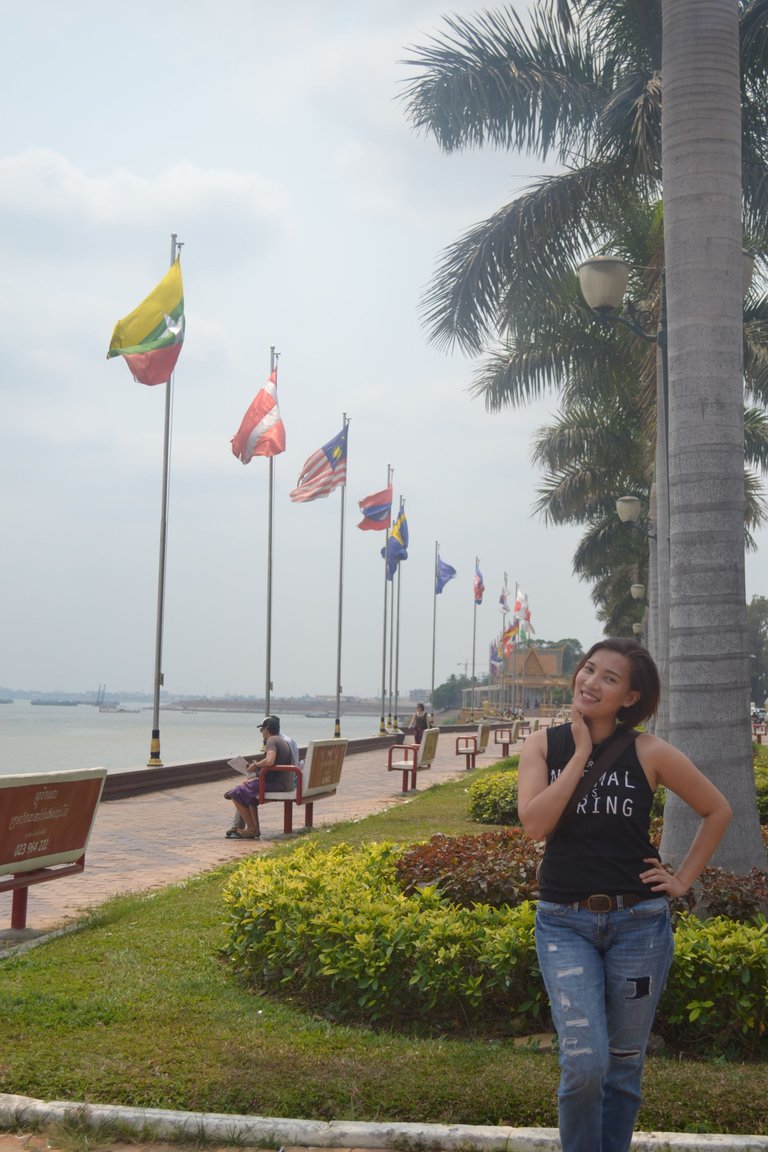
Wow this is one of the best post I have read on Steemit! I will follow now. I just found you today.
I am very sorry that I was not able to upvote this post and give it the recognition it deserved. I will try to look for your future post and share them.
Thank you for your compliment. This is the longest blog I have ever written and I am glad you read the whole post. I haven't been writing anything lately but I will be posting more again soon. Have a nice day. :)
I loved this tour. Ever since the film "the Killing Fields" with that haunting music by Samuel Barber, Cambodia has held a fascination for me as a country I know far too little about.

My interest was immediately peaked by that cyrstal buddha, and there are plenty of photos on line already (how did they make them!??) of the tiny green god, but I like this photo because it shows you where he is situated - right on the top tier of that throne, right?
https://journals.worldnomads.com/seesea/photo/14400/404277/Cambodia/Pagoda-of-the-Emerald-Buddha-Royal-Palace-Phnom-Penh
The way this museum has been organised is quite overwhelming to Western eyes!
How are they able to take those photos? I did go inside but of course we were not able to take any snaps coz it was not allowed.
Anyway, before going to Cambodia, I really did not know much about the country except for the famous Angkor Wat. To be honest, this is by far the hardest travel blog I've written because of the things I learned and saw from the tour is just heartbreaking.
Can't wait to hear more of your travels. You really "undergo" them, instead of rush through places.
Thank you for always reading my blog. We try to take our time when we travel but there some instances that we can't.
This post has received a 0.05 % upvote from @drotto thanks to: @banjo.
I just visited Thailand and I am thinking of visiting Cambodia the next year or so. You did a good job and I liked your writing on it and I hope you get the attention it requires. I followed and I will be reading more into your blog from now on. I would read it with more pleasure if you would share more of your personal experiences, as this is a personal interest of mine. Kind of a mix between a short story, your own thoughts and the travel locations :P Good luck!
Thank you for reading my blog. I know it's quite long so I appreciate anyone who gives time to read it.
Thank you for your feedback too. I am new to writing blogs so I know I need to improve on my story telling. I will try to relay more of my experiences on my next blogs. I hope I can successfully do that. LoL
Congratulations, Your Post Has Been Added To The Steemit Worldmap!
Author link: http://steemitworldmap.com?author=wincee
Post link: http://steemitworldmap.com?post=travel-diary-7-exploring-the-capital-city-of-cambodia-phnom-penh
Want to have your post on the map too?
This post has received a 50.00 % upvote from @spotlight thanks to www.resteemit.com.
As a follower of @followforupvotes this post has been randomly selected and upvoted! Enjoy your upvote and have a great day!
Full of information!
Thank you for checking out my post. :)
Your Post Has Been Featured on @Resteemable!
Feature any Steemit post using resteemit.com!
How It Works:
1. Take Any Steemit URL
2. Erase
https://3. Type
reGet Featured Instantly � Featured Posts are voted every 2.4hrs
Join the Curation Team Here | Vote Resteemable for Witness
lovely diary, nice story,, upvoted you, nice post, please also check my post
Thank you for checking my post. I checked out one of your post and I even commented on it. :)
Heya, just swinging by to let you know you're being featured in our Daily Travel Digest!
Yey! Thank you for choosing my blog. I will go head there to read the other entries today. 😊
Congratulations! This post has been upvoted from the communal account, @minnowsupport, by wincee from the Minnow Support Project. It's a witness project run by aggroed, ausbitbank, teamsteem, theprophet0, someguy123, neoxian, followbtcnews, and netuoso. The goal is to help Steemit grow by supporting Minnows. Please find us at the Peace, Abundance, and Liberty Network (PALnet) Discord Channel. It's a completely public and open space to all members of the Steemit community who voluntarily choose to be there.
If you would like to delegate to the Minnow Support Project you can do so by clicking on the following links: 50SP, 100SP, 250SP, 500SP, 1000SP, 5000SP.
Be sure to leave at least 50SP undelegated on your account.
Your account of the killing fields is chilling. It might be easier to turn a blind eye and decide not to look but I think it’s important to confront the horrors of the past. It’s our shared history as human beings. Thanks for sharing
Writing about the Killing Fields was the hardest part of this blog. It feels like I was at the site again with all the memories rushing back to me. And totally agree with you that it is important to confront the horrors of the past. This tour was such an eye opener.
You got a 1.76% upvote from @buildawhale courtesy of @wincee!
If you believe this post is spam or abuse, please report it to our Discord #abuse channel.
If you want to support our Curation Digest or our Spam & Abuse prevention efforts, please vote @themarkymark as witness.
You got a 9.97% upvote from @mercurybot courtesy of @wincee!
You got a 7.87% upvote from @ipromote courtesy of @wincee!
If you believe this post is spam or abuse, please report it to our Discord #abuse channel.
If you want to support our Curation Digest or our Spam & Abuse prevention efforts, please vote @themarkymark as witness.
Wow that was so good. Wery good written blog. Thank you for sharing. I would love to see there one day. :)
Thank you for your kind words. I hope you would have a chance to visit Cambodia too. Then you can share your experience when you do. :)
Always great posts wincee, you do a fantastic job and we are happy to have you as our member!
Congratulations you have been resteemed as part of #newbieresteemday's top posts for the day! ...
We invite you to use our tag to connect with more of our members. To learn more: Come Join Us!!! (Newbie Resteem Initiative)
Thank you for your support. :)
Very nicely done post. Thank you for sharing your story and these very enjoyable photos. Steem on! @ironshield